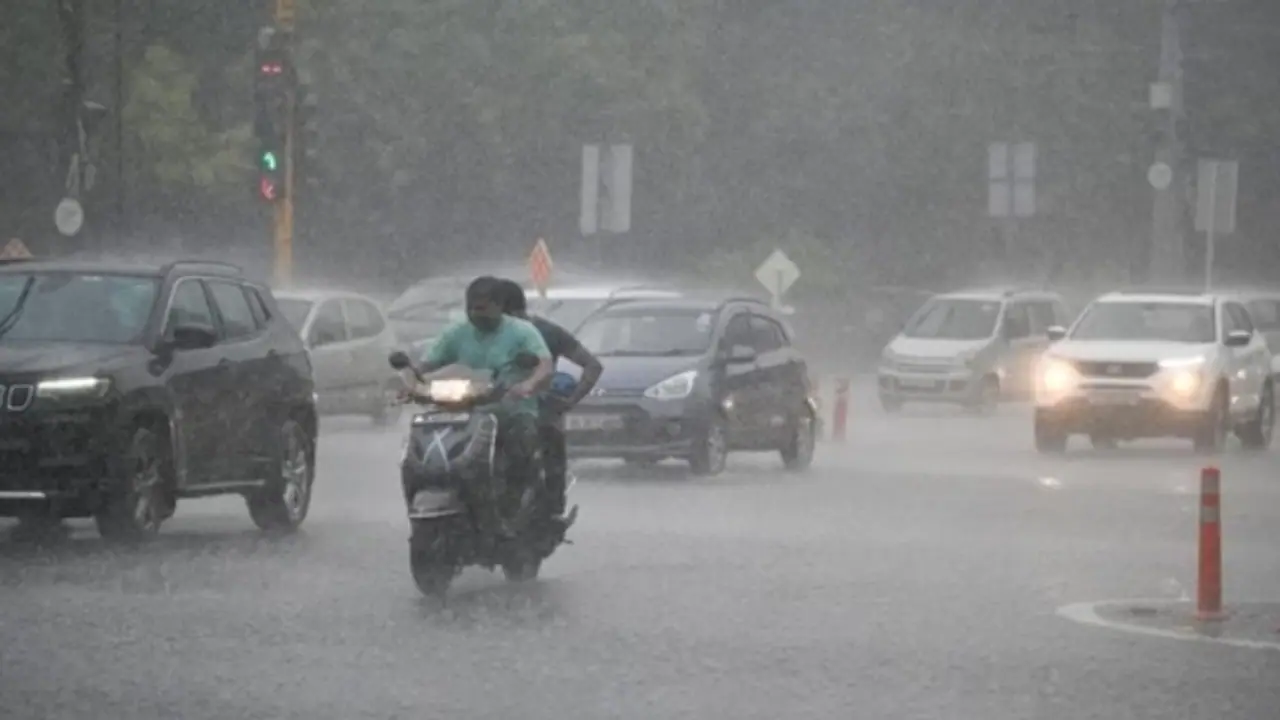The early arrival of the southwest monsoon, while offering respite from the summer heat, raises concerns about its potential impact on the common man's pocketbook.
The southwest monsoon, arriving earlier than usual for the first time since 2009, has brought relief from the scorching summer heat. However, concerns are rising about its potential impact on the common man's finances. From rising onion prices to disruptions in the supply chain, the monsoon could lead to a resurgence in inflation, which has recently been declining. FMCG companies are also facing challenges due to the loss of summer product sales.

Updated Meteorological Department Forecast:
The India Meteorological Department (IMD) has updated its forecast, predicting above-normal rainfall during the 2025 monsoon season. They've increased their prediction from last month's 105% of the long-period average (LPA) to 106% for the four-month monsoon period. The IMD expects rainfall to be around 108% of the LPA across the country, particularly in June. They also noted a possible temporary break in the monsoon's northward movement and rainfall intensity after the initial 3-4 days.
Mumbai has already experienced extremely heavy rainfall and a red alert has been issued. The IMD predicts heavy rainfall along the west coast, including Kerala, Karnataka, Maharashtra, and Goa, until June 1st. The monsoon is likely to advance further into Maharashtra, Telangana, Andhra Pradesh, and the north Bay of Bengal.
Monsoon and Inflation:
The Reserve Bank of India (RBI), which reduced the repo rate to 6% in April 2025, may consider the challenges posed by the monsoon in its upcoming review meeting. In its April policy announcement, the central bank noted that inflation, particularly food inflation, had declined more than expected, aided by a good rabi harvest, record wheat production, and a drop in global prices. CPI inflation fell to a six-year low of 3.16% in April from 3.34% in March. Food inflation eased to 1.78%. However, the early arrival of the monsoon this year could pose a challenge to these gains.
Crop Damage in Maharashtra:
Crop damage in Maharashtra, a major onion-producing region, has already raised concerns. Continuous rainfall has caused damage to crops across 34,842 hectares in districts like Amravati, Jalgaon, Buldhana, and Ahmednagar. Nashik alone reported damage to over 3,230 hectares of crops, while Solapur and Pune reported damage to 1,252 and 676 hectares, respectively. Banana, mango, onion, lemon, and vegetable crops have been particularly affected. Strong winds and waterlogging have uprooted crops and fruit trees. Onions, tomatoes, and potatoes account for up to 37% of the cost of a vegetarian meal. In April 2025, the average cost of a vegetarian meal was ₹26.3, a 4% decrease from the previous year. Any disruption in vegetable supply could increase this cost.
Last October, heavy rains disrupted supply, leading to a 46% increase in onion prices and a 51% increase in potato prices. Crisil reported a 20% increase in meal costs at that time. Tomato prices doubled from ₹29 per kg to ₹64 per kg due to crop damage in September. As of May 20, 2025, onion prices at Lasalgaon, India's largest wholesale onion market, were ₹1,150 per quintal. Prices are expected to rise further due to disruptions in transportation and storage caused by the rain.
Tomato prices in Pune have risen from ₹5 per kg a few days ago to ₹20-25 per kg due to reduced arrivals. APMC officials reported a 50% drop in vegetable supply as farmers struggled to harvest and transport produce due to continuous rain. Reports indicate a 10% to 25% increase in tomato prices in Maharashtra, Gujarat, Karnataka, and Andhra Pradesh last week. Prices of spinach, fenugreek, and coriander have also increased by 12% to 16%.
Economic Implications:
In 2024, monsoon disruptions led to a surge in food inflation. The Consumer Food Price Index rose to a 57-month high of 10.87% in October due to delayed sowing and floods in key states. Vegetable prices alone rose by 28%, while prices of cereals and pulses increased by 8-17%. Meanwhile, the Consumer Price Index, which includes non-food items, rose to 6.21%.
If food prices rise again, the RBI's projection of 4% CPI inflation in FY2026 could be jeopardized. The Monetary Policy Committee is scheduled to meet on June 4th, with a decision expected on June 6th. While a 25 basis point rate cut was widely anticipated to support growth, the inflation threat may cause the RBI to reconsider. The RBI projects India's real GDP growth at 6.5% in 2026, while the IMF forecasts 6.2%. However, the challenges posed by climate variability could become a significant hurdle.


